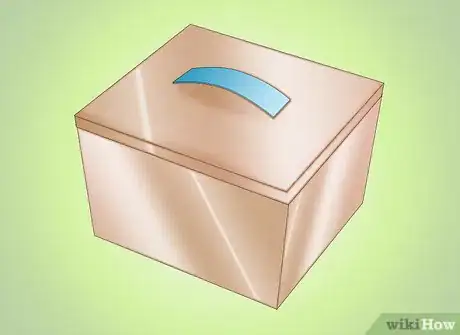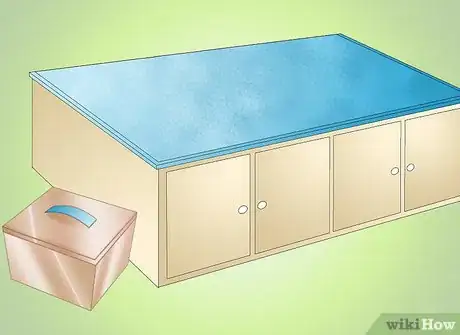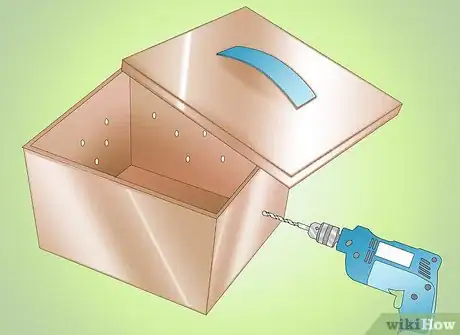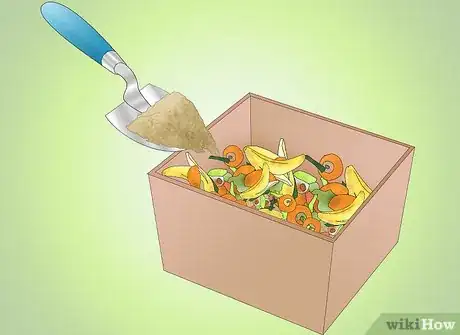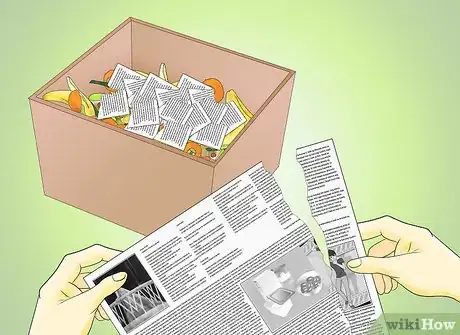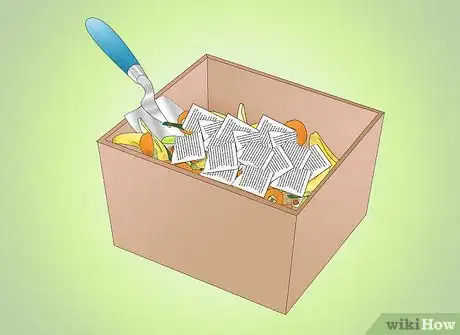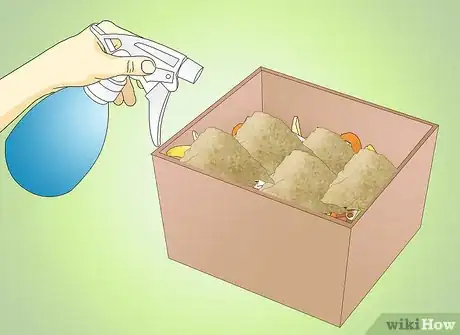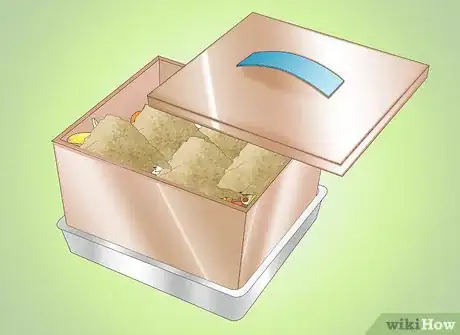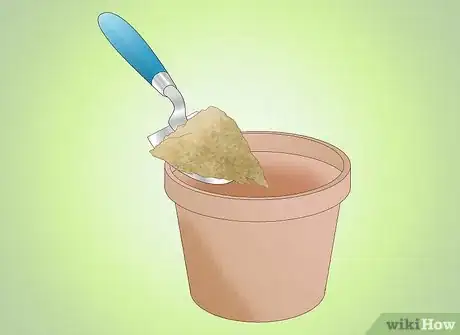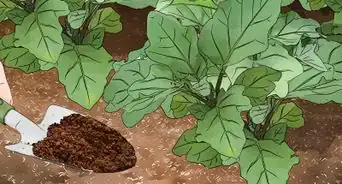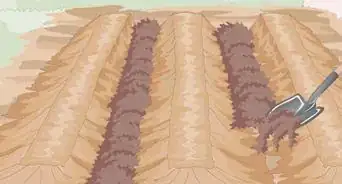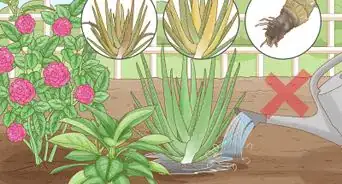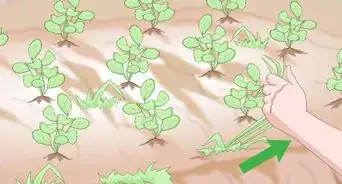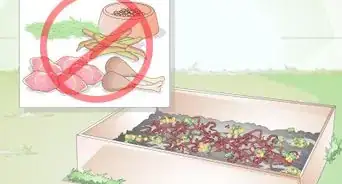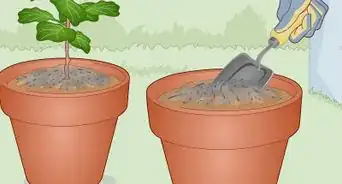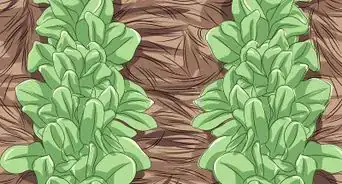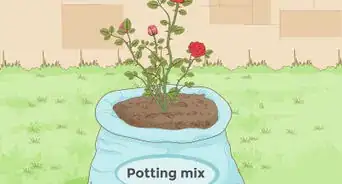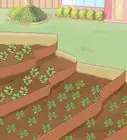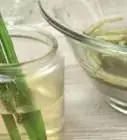wikiHow is a “wiki,” similar to Wikipedia, which means that many of our articles are co-written by multiple authors. To create this article, volunteer authors worked to edit and improve it over time.
This article has been viewed 45,614 times.
Learn more...
Composting is the process of helping organic materials like kitchen scraps and grass clippings to decompose in a controlled setting. This is usually done outdoors in an open compost heap, but apartment and condo dwellers will not have access to enough outdoor space to use this method. Instead, you can run a small composting operation indoors, using only a small lidded trash can. This method will help you make compost for houseplants, and you can always donate or sell the excess if you produce more than needed.
Steps
Set Up Your Indoor Compost Bin
-
1Choose a container for your compost. You will need an opaque container that has a lid; the capacity should be around 1 to 3 gallons (4 - 11 L). Small metal garbage cans are ideal for this, as are plastic storage bins with lids.
-
2Select a location for your indoor composting. You will want to keep your compost bin close to the kitchen, as this will prevent you from having to trek across your home with your vegetable scraps. Placing the bin under your kitchen sink is an option, but a more attractive compost container could be prominently displayed as part of your décor.Advertisement
-
3Drill holes into your container. Use an electric drill to create small holes throughout the sides and bottom of your container. These holes will allow fresh oxygen to circulate into the container, which is essential for the aerobic bacteria that drive decomposition.
-
4Place your compost bin onto a shallow tray. Finally, you'll need to position the bin on top of a shallow pan or tray that will collect any excess water that drips out of the holes in the container's bottom.
Add Organic Matter to Your Compost Bin
-
1Scoop a layer of potting soil into the bin. Begin by adding a few scoops of potting soil to your compost bin - enough to create a layer a few inches (a few cm) deep. Potting soil is helpful for composting indoors because it helps regulate the moisture level of the mixture, which can prevent insect infestation or unpleasant odors.
- Do not use soil collected from outdoors instead of potting soil. If you intend to use the finished compost for houseplants, the consistency and drainage ability of the soil will be compromised if you introduce outdoor soil.
-
2Add your organic scraps to the compost bin. Whenever you can, collect organic scraps for composting. This can include vegetable peels or cores, coffee grounds, dead flowers, grass clippings, and leftover cooked foods like rice. Cut these scraps into small pieces to increase the available surface area for decomposition, and then place them in the bin.
-
3Add torn newspaper to your compost bin. Each time you add kitchen scraps to the compost pail, you'll need to add a handful of shredded newspaper or cardboard as well. The nitrogen-rich kitchen scraps balance with the carbon-rich newspaper to create a balanced environment for bacteria.
-
4Turn the compost weekly. About once a week, use a small trowel or other tool to mix your compost around. This incorporates fresh oxygen throughout the mixture and keeps the compost from getting too compacted. You can also add a small handful of potting soil each time you do this.
-
5Monitor the moisture level of your compost. For decomposition to proceed efficiently, the compost should be moist, but not soaking wet. You can increase the moisture content of your compost by spraying some water into the bin with a spray bottle. Aim for compost that feels like a wrung-out sponge when handled.
Use the Finished Compost
-
1Allow the compost to decompose once the bin is filled. Once the bin is nearly full, you'll need to stop introducing new scraps and let the compost finish decomposing. You can leave the bin in any location during this process, and you should continue to turn the compost once a week. The compost should be finished in a few months, when it will appear as a uniform, rich, black mixture called humus.
-
2Add the finished compost to your houseplant pots. To work the compost into your houseplants' soil, simply sprinkle a small amount of it onto the top of the soil and then work it into the soil with your fingers.
Community Q&A
-
QuestionDoes this composting method produce bad smell in the house?
 DonaganTop AnswererWell-maintained compost smells like healthy soil.
DonaganTop AnswererWell-maintained compost smells like healthy soil. -
QuestionDoes this method attract fruit flies and house flies?
 DonaganTop AnswererIf you use kitchen wastes, cover them with the developing compost or cover them with leaves or plant clippings, and you shouldn't have a problem.
DonaganTop AnswererIf you use kitchen wastes, cover them with the developing compost or cover them with leaves or plant clippings, and you shouldn't have a problem. -
QuestionWhere do you add the extra soil to a container plant?
 DonaganTop AnswererPut it on top of the dirt in the container. Try to dig it into the dirt a little without disturbing the roots.
DonaganTop AnswererPut it on top of the dirt in the container. Try to dig it into the dirt a little without disturbing the roots.
Warnings
- Note that compost cannot be completely substituted for plant food, as it provides relatively low levels of nitrogen, phosphorus, and potassium.⧼thumbs_response⧽
- Avoid putting meat, bones, dairy, or fats into your compost bin. These substances can go rancid, emit offensive odors, and harbor dangerous pathogens.⧼thumbs_response⧽
Things You'll Need
- Lidded container
- Electric drill
- Shallow tray
- Hand trowel
- Potting soil
- Kitchen scraps
- Newspaper
- Water
- Spray bottle
- Red wiggler worms (optional)
